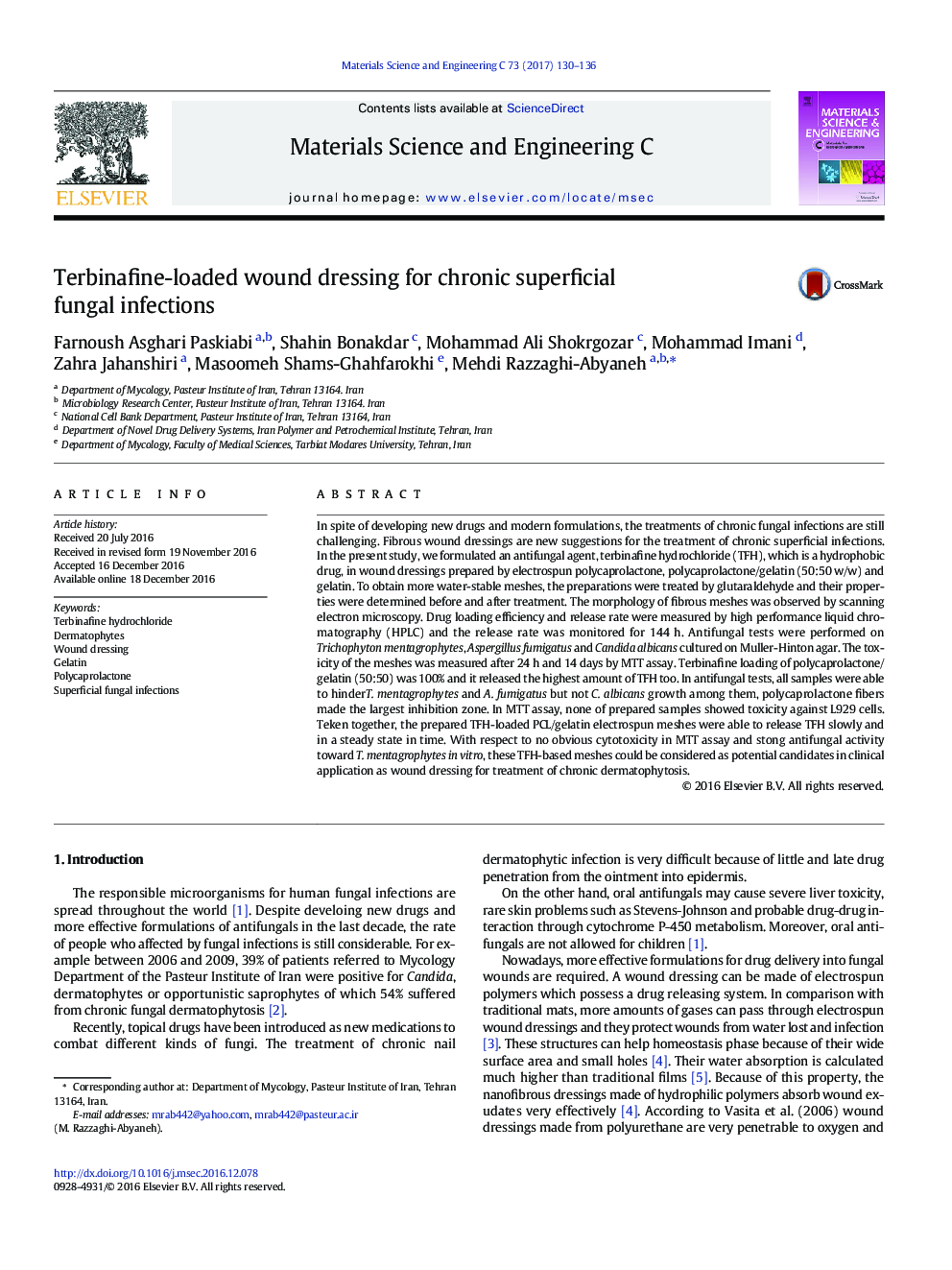| کد مقاله | کد نشریه | سال انتشار | مقاله انگلیسی | نسخه تمام متن |
|---|---|---|---|---|
| 5434913 | 1509148 | 2017 | 7 صفحه PDF | دانلود رایگان |
- Terbinafine (TFH)-loaded PCL/gelatin electrospun fibers were successfully fabricated.
- TFH-loaded PCL/gelatin electrospun fibers showed a slow drug release profile.
- TFH-loaded PCL/gelatin electrospun fibers strongly inhibited the growth of T. mentagrophytes and A. fumigatus.
- TFH-loaded PCL/gelatin electrospun fibers did not show any cytotoxicity against L929 cells in MTT assay.
In spite of developing new drugs and modern formulations, the treatments of chronic fungal infections are still challenging. Fibrous wound dressings are new suggestions for the treatment of chronic superficial infections. In the present study, we formulated an antifungal agent, terbinafine hydrochloride (TFH), which is a hydrophobic drug, in wound dressings prepared by electrospun polycaprolactone, polycaprolactone/gelatin (50:50 w/w) and gelatin. To obtain more water-stable meshes, the preparations were treated by glutaraldehyde and their properties were determined before and after treatment. The morphology of fibrous meshes was observed by scanning electron microscopy. Drug loading efficiency and release rate were measured by high performance liquid chromatography (HPLC) and the release rate was monitored for 144Â h. Antifungal tests were performed on Trichophyton mentagrophytes, Aspergillus fumigatus and Candida albicans cultured on Muller-Hinton agar. The toxicity of the meshes was measured after 24Â h and 14Â days by MTT assay. Terbinafine loading of polycaprolactone/gelatin (50:50) was 100% and it released the highest amount of TFH too. In antifungal tests, all samples were able to hinderT. mentagrophytes and A. fumigatus but not C. albicans growth among them, polycaprolactone fibers made the largest inhibition zone. In MTT assay, none of prepared samples showed toxicity against L929 cells. Teken together, the prepared TFH-loaded PCL/gelatin electrospun meshes were able to release TFH slowly and in a steady state in time. With respect to no obvious cytotoxicity in MTT assay and stong antifungal activity toward T. mentagrophytes in vitro, these TFH-based meshes could be considered as potential candidates in clinical application as wound dressing for treatment of chronic dermatophytosis.
371
Journal: Materials Science and Engineering: C - Volume 73, 1 April 2017, Pages 130-136
